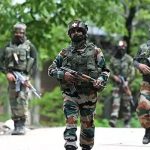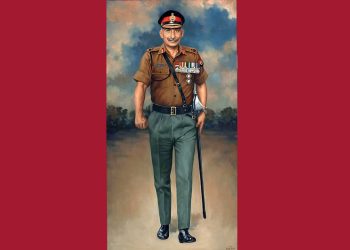Lt Gen DP Pandey’s Reflections on Strategy fills a long-felt void in Indian military literature, bridging the often-overlooked gap between high-level strategic formulation and its application on the ground. What sets the book apart is its discerning engagement with the concept of Grand Strategy—against the background of changing global power dynamics, the eastward shift of the ‘centre of gravity’ to the Indo-Pacific, and the transformative impact of technology in contemporary warfare. Based heavily on decades of operational experience, Gen Pandey presents the view of a scholar-warrior—a soldier who has lived it. The insights bring to life a practical and adaptive framework for tackling today’s complex security challenges, all while remaining rooted in India’s rich strategic heritage and its relevance in the twenty-first century.
The problem Gen Pandey addressed is the artificial separation between strategic thought and operational practice in the contemporary military landscape. The book questions the flawed assumption that practitioners and strategicians are separable entities. This distinction, the author contends, has hindered India from framing a genuinely integrated national security approach, especially in an era demanding rapid decision-making and adaptive responses.
The solution suggested is the cultivation of strategic practitioners—military commanders who possess both hands-on operational experience and the intellectual capacity to devise and implement strategic vision. The book argues that strategic direction is the pinnacle of leadership, demanding the capacity to innovate the strategic direction based on information at hand, particularly in the unpredictable world, and keep coming up with and making up new solutions to remain objectively on the path of the vision outlined.
Throughout the book, Gen Pandey makes a subtle case for restraint as a winning strategy, e.g., Operation Vijay and Operation Sindoor. The examination proves the subtlety of strategic choice in constraint. Confronted with an unwanted war thrust upon a caretaker government in 1999, the Indian leadership was faced with three different choices: declaring total war and capturing territory in the plains; confining operations to the Line of Control in Jammu and Kashmir while not crossing the International Borders; or seeking diplomatic and international mediation. The way the author presents this conundrum serves to demonstrate his overall thesis that strategic leadership entails navigating the intersection of military capability, political constraints, and international perception without compromising national interests.
The book debunks the common misconception that India’s strategic culture is passive or lacks offensive intent. The book argues that India’s grand strategic vision has been misinterpreted all along—labelled as cautious or reactive—partly due to prevailing narratives in academic, political, and media realms. It notes that this tendency to downplay assertiveness is not unique to India but also evident in the manner China, the US, and Russia portrayed themselves in strategic discourse. In this argument, Pandey tries to reclaim the much-neglected offensive aspects of India’s strategic thinking and, at the same time, highlight the less researched military culture.
The author identifies three major contributions of ancient India to strategic thought: importance given to sovereignty and accountability of armed forces, just and righteous war, and non-alignment. This philosophical dimension provides ethical foundations for strategic decision-making that remains relevant in contemporary conflict scenarios.
The book devotes considerable attention to the information dimension of statecraft, recognising its critical role in twenty-first-century warfighting. The author insightfully observes that “information serves as the primary enabler of influence”, symbolising the transition from the balance of power to a balance of influence. In this changing scenario, four major factors—education, finance, the military, and the media—emerge as the main instruments shaping the information domain. On jointmanship and theaterisation, it addresses the psychological and cultural impediments to integration amongst the three services. Further, the transition from tactical to strategic leadership receives detailed examination, with the author arguing that this development has to commence at a very young age and service rather than waiting for a time with adequate seniority by which the ways an individual thinks and acts are fixed at a tactical level. This observation challenges existing career progression models within the Indian military establishment and calls for fundamental reform in leadership development practices.
The main strength of the book lies in its integration of practical operational experience with strategic analysis. This practitioner’s style gives strength and validity to the assertions while offering insights that might escape academic strategists. India’s strategic culture shows great depth, effectively countering prevailing analyses that often portray Indian strategic thought as reactive or defensive.
Lt Gen DP Pandey’s Reflections on Strategy is a useful addition to the small body of Indian strategic and military literature by serving and retired officers. The book’s most valuable contribution lies in demonstrating that strategic thinking need not be the exclusive preserve of academic institutions but rather emerges most powerfully when informed by operational experience and practical wisdom. The author’s emphasis on developing strategic practitioners “for Bharat to emerge not only as Viksit Bharat 2047 but also Surakshit Bharat 2047, because both pillars are inseparable” identifies the very interdependence of development and security that will define India’s trajectory in the decades ahead.













